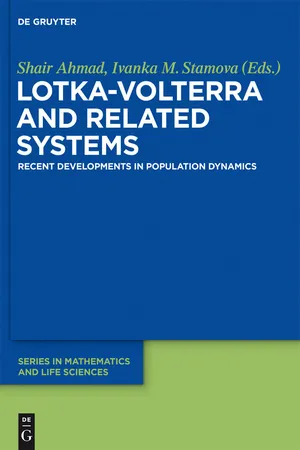
Lotka-Volterra and Related Systems
Recent Developments in Population Dynamics
- 244 pages
- English
- PDF
- Available on iOS & Android
Lotka-Volterra and Related Systems
Recent Developments in Population Dynamics
About this book
In recent years, there has been a tremendous amount of research activity in the general area of population dynamics, particularly the Lotka-Volterra system, which has been a rich source of mathematical ideas from both theoretical and application points of view.
In spite of the technological advances, many authors seem to be unaware of the bulk of the work that has been done in this area recently. This often leads to duplication of work and frustration to the authors as well as to the editors of various journals. This book is built out of lecture notes and consists of three chapters written by four mathematicians with overlapping expertise that cover a broad sector of the research in this area. Each chapter consists of carefully written introductory exposition, main breakthroughs, open questions and bibliographies.
The chapters present recent developments on topics involving the dynamic behavior of solutions and topics such as stability theory, permanence, persistence, extinction, existence of positive solutions for the Lotka-Volterra and related systems. This fills a void in the literature, by making available a source book of relevant information on the theory, methods and applications of an important area of research.
Frequently asked questions
- Essential is ideal for learners and professionals who enjoy exploring a wide range of subjects. Access the Essential Library with 800,000+ trusted titles and best-sellers across business, personal growth, and the humanities. Includes unlimited reading time and Standard Read Aloud voice.
- Complete: Perfect for advanced learners and researchers needing full, unrestricted access. Unlock 1.4M+ books across hundreds of subjects, including academic and specialized titles. The Complete Plan also includes advanced features like Premium Read Aloud and Research Assistant.
Please note we cannot support devices running on iOS 13 and Android 7 or earlier. Learn more about using the app.
Information
Table of contents
- Preface
- Permanence, global attraction and stability
- Competitive Lotka-Volterra systems with periodic coefficients
- Fixed points, periodic points and chaotic dynamics for continuous maps with applications to population dynamics
- Index